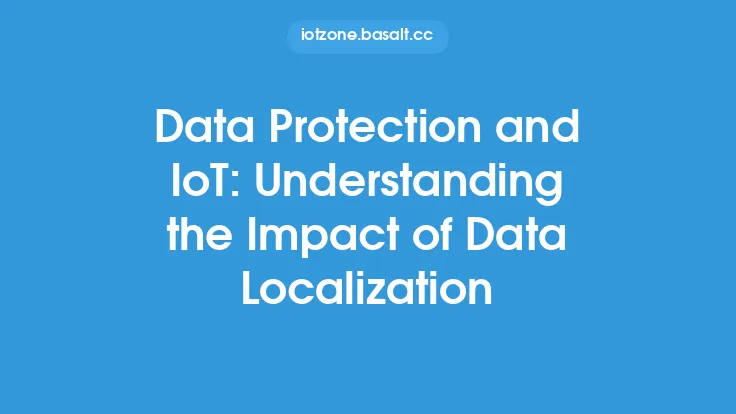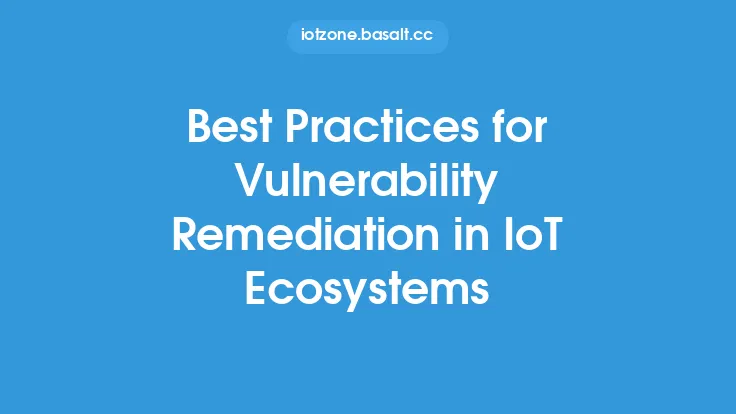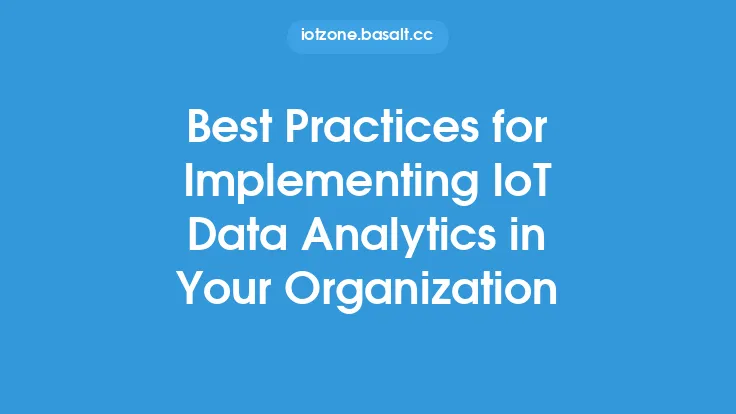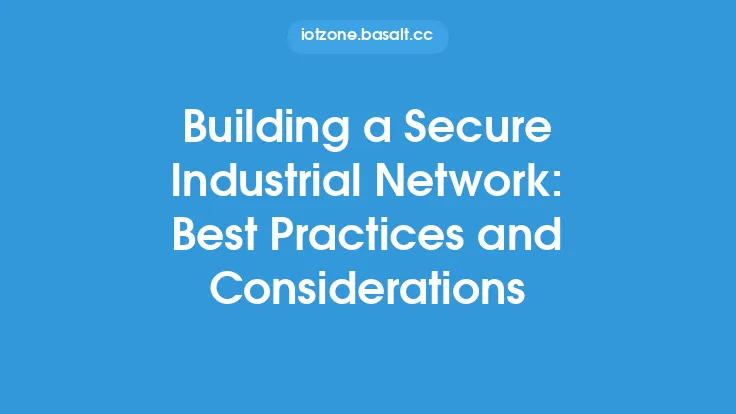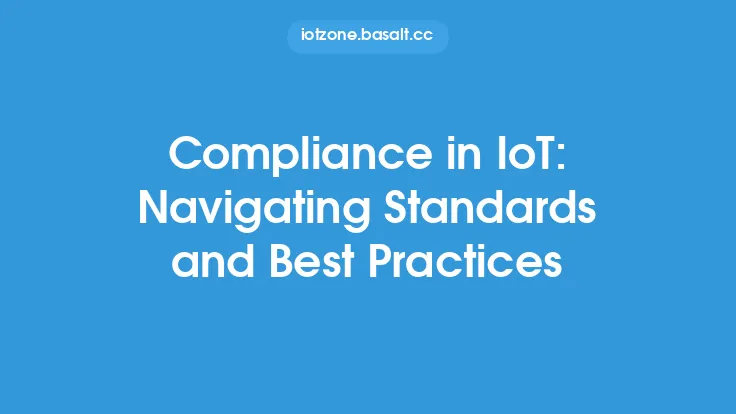The Internet of Things (IoT) has revolutionized the way we live and work, with an estimated 22 billion connected devices worldwide by 2025. However, this increased connectivity also introduces significant data protection challenges. As IoT devices collect, transmit, and store vast amounts of personal and sensitive data, ensuring the security and integrity of this data is crucial. In this article, we will delve into the best practices for a secure IoT ecosystem, focusing on the technical and practical aspects of data protection.
Introduction to IoT Data Protection
IoT data protection refers to the practices and technologies used to safeguard the confidentiality, integrity, and availability of data collected, processed, and transmitted by IoT devices. This includes personal data, such as user identities and locations, as well as sensitive data, like financial information and health records. Effective IoT data protection is essential to prevent unauthorized access, use, or disclosure of this data, which can lead to identity theft, financial loss, and reputational damage.
Key Principles of IoT Data Protection
To ensure a secure IoT ecosystem, several key principles must be followed:
- Data Encryption: Encrypting data both in transit and at rest is critical to prevent unauthorized access. This can be achieved using protocols like TLS (Transport Layer Security) and AES (Advanced Encryption Standard).
- Secure Communication Protocols: IoT devices should use secure communication protocols, such as CoAP (Constrained Application Protocol) and MQTT (Message Queuing Telemetry Transport), to prevent eavesdropping and tampering.
- Device Authentication and Authorization: Implementing robust device authentication and authorization mechanisms, like public key infrastructure (PKI) and role-based access control (RBAC), ensures that only authorized devices can access and transmit data.
- Regular Software Updates and Patching: Regularly updating and patching IoT device software helps to fix vulnerabilities and prevent exploitation by attackers.
- Data Minimization and Anonymization: Collecting and processing only the minimum amount of data necessary for the intended purpose, and anonymizing data where possible, reduces the risk of data breaches and unauthorized use.
IoT Data Protection Technologies
Several technologies can be employed to enhance IoT data protection, including:
- Hardware Security Modules (HSMs): HSMs provide a secure environment for cryptographic operations, such as key generation and encryption.
- Trusted Execution Environments (TEEs): TEEs create a secure area within an IoT device's processor, isolating sensitive data and code from the rest of the system.
- Secure Boot and Firmware Updates: Secure boot mechanisms ensure that only authorized firmware can be loaded onto an IoT device, while secure firmware updates prevent unauthorized modifications.
- Intrusion Detection and Prevention Systems (IDPS): IDPS monitor IoT network traffic for signs of unauthorized access or malicious activity, alerting administrators to potential security threats.
Best Practices for IoT Data Protection
To ensure a secure IoT ecosystem, the following best practices should be adopted:
- Conduct Regular Security Audits and Risk Assessments: Identify potential vulnerabilities and weaknesses in IoT devices and networks, and implement measures to mitigate these risks.
- Implement Incident Response Plans: Establish procedures for responding to security incidents, such as data breaches or unauthorized access, to minimize damage and prevent future occurrences.
- Provide User Education and Awareness: Educate users about the importance of IoT data protection and the steps they can take to secure their devices and data.
- Collaborate with IoT Device Manufacturers: Work with manufacturers to ensure that IoT devices are designed and built with security in mind, and that security updates and patches are regularly provided.
IoT Data Protection Standards and Regulations
Several standards and regulations govern IoT data protection, including:
- General Data Protection Regulation (GDPR): The GDPR sets out strict data protection requirements for organizations operating in the European Union, including those that collect and process IoT data.
- National Institute of Standards and Technology (NIST) Cybersecurity Framework: The NIST Cybersecurity Framework provides a set of guidelines and best practices for managing and reducing cybersecurity risk, including IoT data protection.
- International Organization for Standardization (ISO) 27001: ISO 27001 is a widely adopted standard for information security management systems, which includes guidelines for IoT data protection.
Conclusion
IoT data protection is a critical aspect of ensuring the security and integrity of the vast amounts of data collected, transmitted, and stored by IoT devices. By following key principles, such as data encryption and secure communication protocols, and employing technologies like HSMs and TEEs, organizations can create a secure IoT ecosystem. Additionally, adopting best practices, such as regular security audits and incident response planning, and complying with relevant standards and regulations, can help to prevent data breaches and unauthorized use. As the IoT continues to grow and evolve, prioritizing data protection is essential to build trust and ensure the long-term success of this technology.
